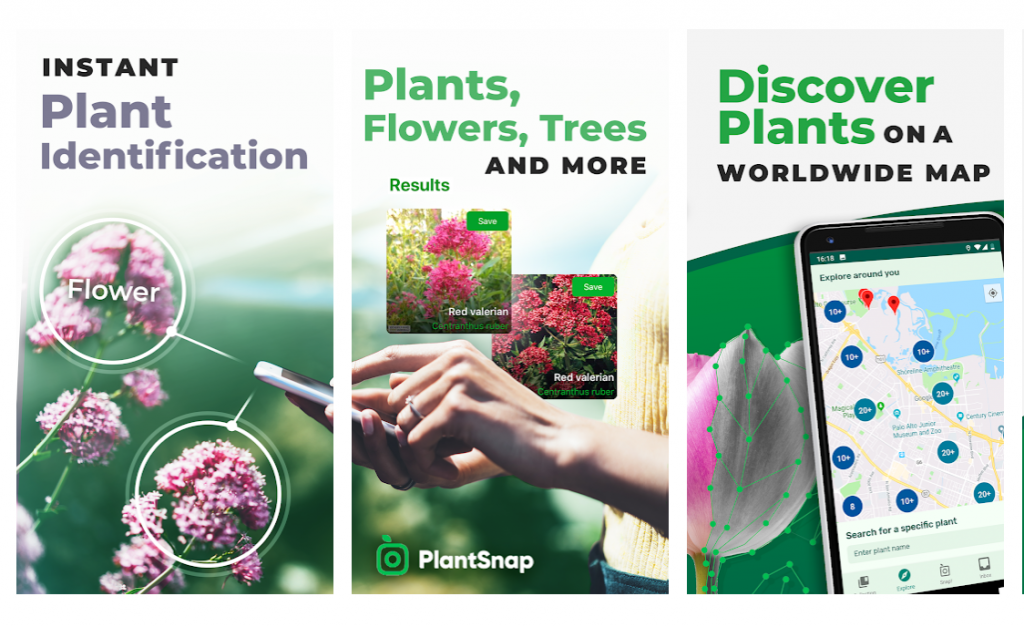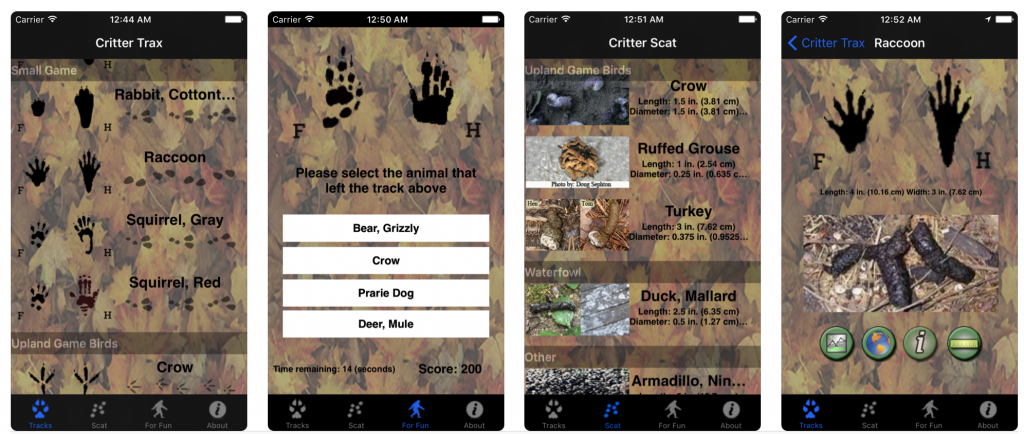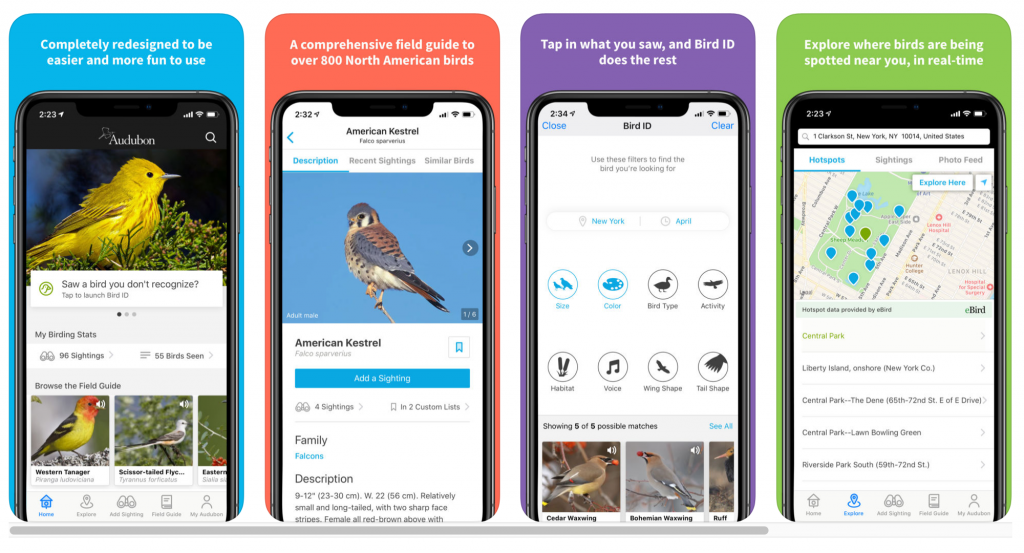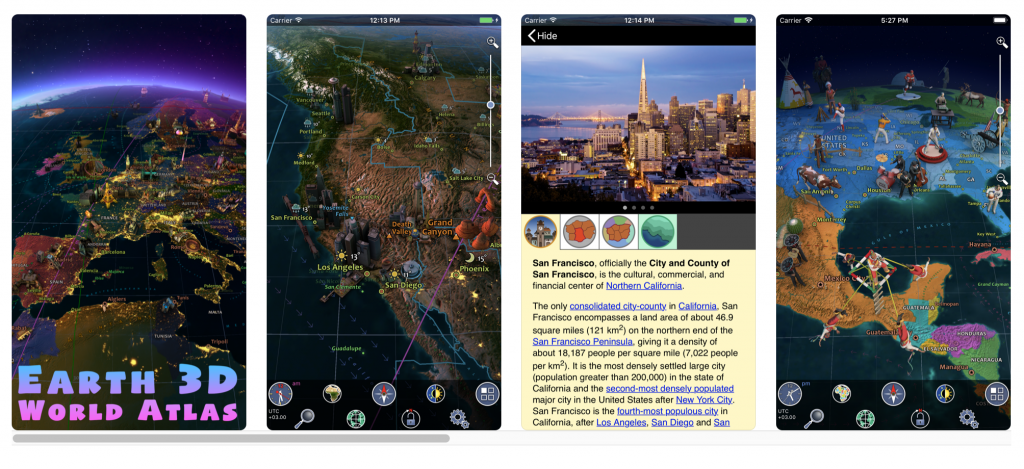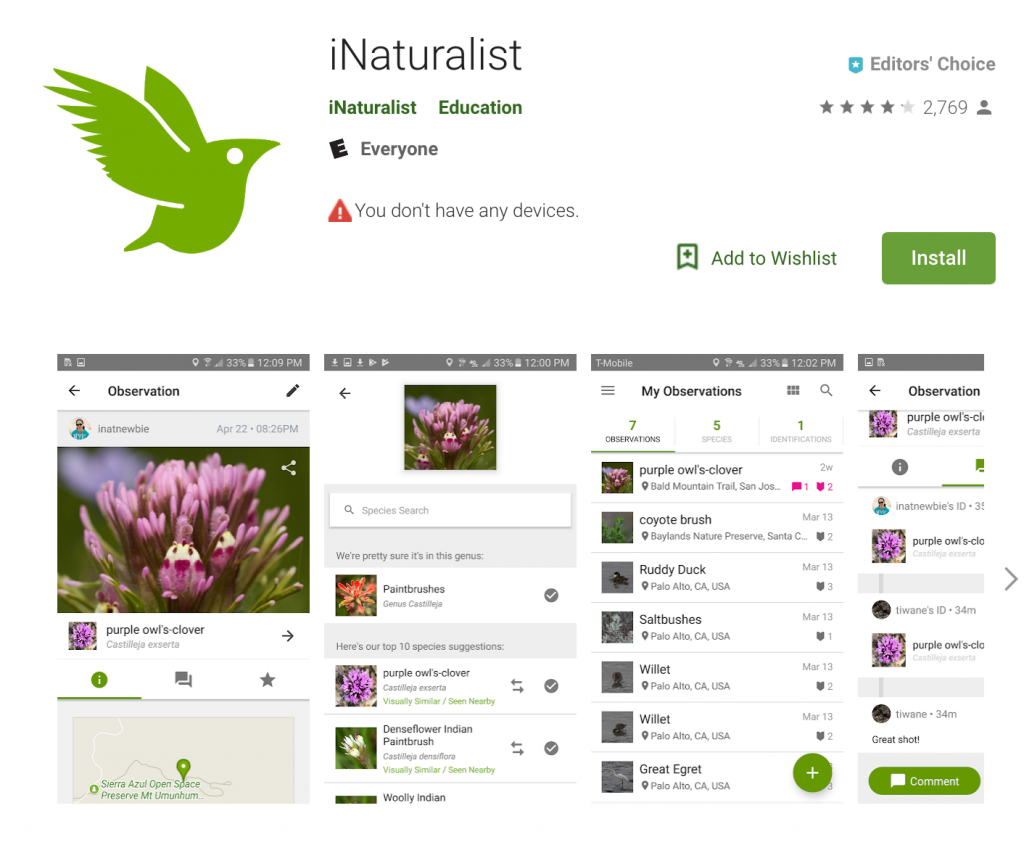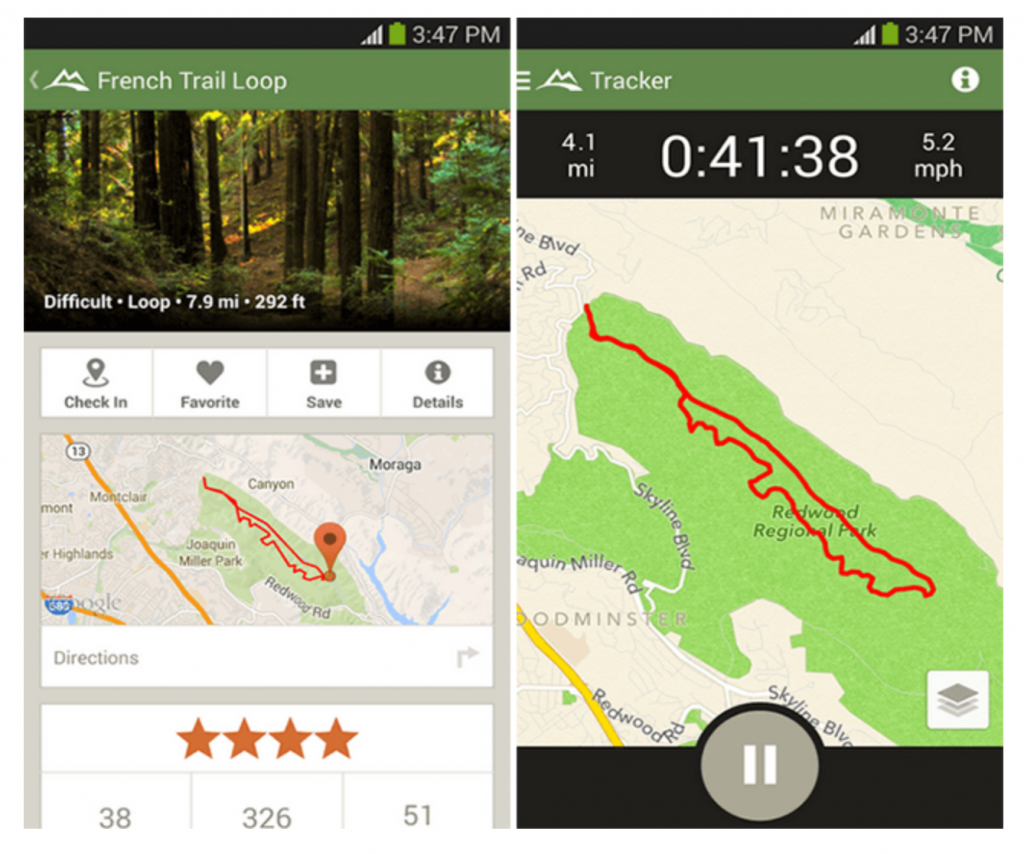Back when kids like me didn’t have smartphones, we used BOOKS to learn about nature. If you wanted help identifying plants or birds or animals, you used books called “field guides” to take with you to help figure out whether you were looking at a sparrow or a warbler. If you wanted to figure out where a trail would go, you used a paper map. You better not tear it, or get it wet!
But now, technology has put this kind of knowledge in the palm of our hands – as long as your power doesn’t wear out and your wifi is working. Look through Google Play or the App Store. It’s pretty amazing how many nature oriented apps exist – thousands of them for sure.
We picked out some of the top rated nature apps to get you started. Some of them do have fees, so double check before you download.
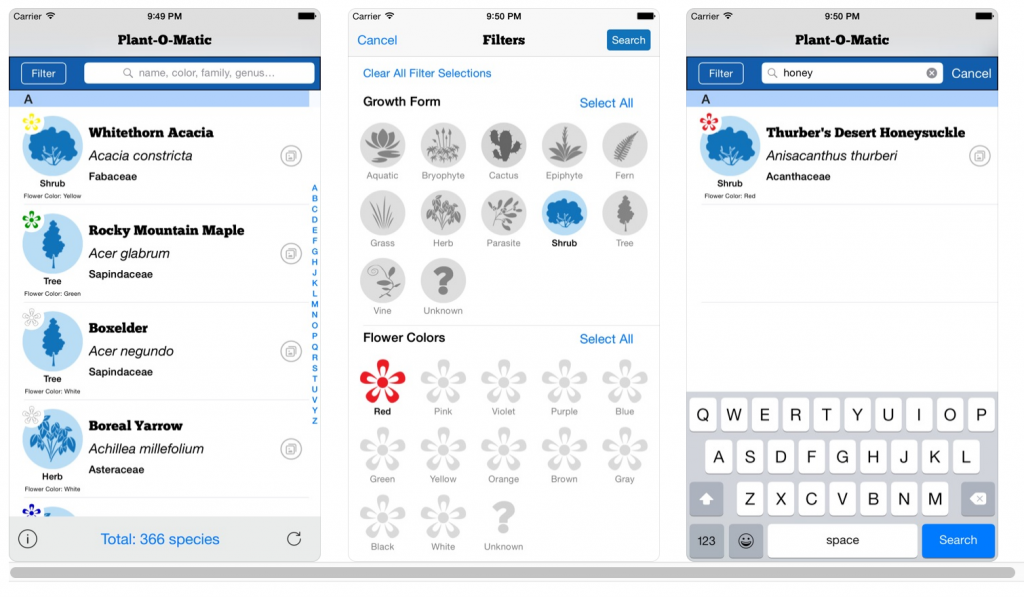
The Plant-O-Matic app contains one of the world’s largest plant identification databases. Not fancy but super functional.
Plant-O-Matic creates a list of local plant species for any location in the Americas. The app includes over 88,000 species, the largest database of its kind. You allow the app to access your GPS, and it will automatically fill in the correct database for your location.
Plant-O-Matic is supported by the National Center for Ecological Analysis and Synthesis, U.S. National Science Foundation, University of California, Santa Barbara, the State of California, iPlant Collaborative, Aspen Center for Environmental Studies and the University of Arizona College of Science. Data and analysis is provided by the New York Botanical Garden, Missouri Botanical Garden, Utrecht Herbarium, the UNC Herbarium, GBIF, REMIB, SpeciesLink and the Texas Advanced Computing Center at the University of Texas.
PlantSnap can identify a plant, flower or tree from a photo. Its algorithm learns more from every photo submitted powered by artificial intelligence. The plant database is global and contains more than 625,000 plants, trees, flowers, even mushrooms (which aren’t plants, but who’s complaining). PlantSnap will recognize many of the plants or trees you see on a hike or in a park.
On the companion website, you can save a personal collection list. Start with a free trial. You can continue to use it free with ads, or a $19.99 annual subscription/$2.99 monthly.
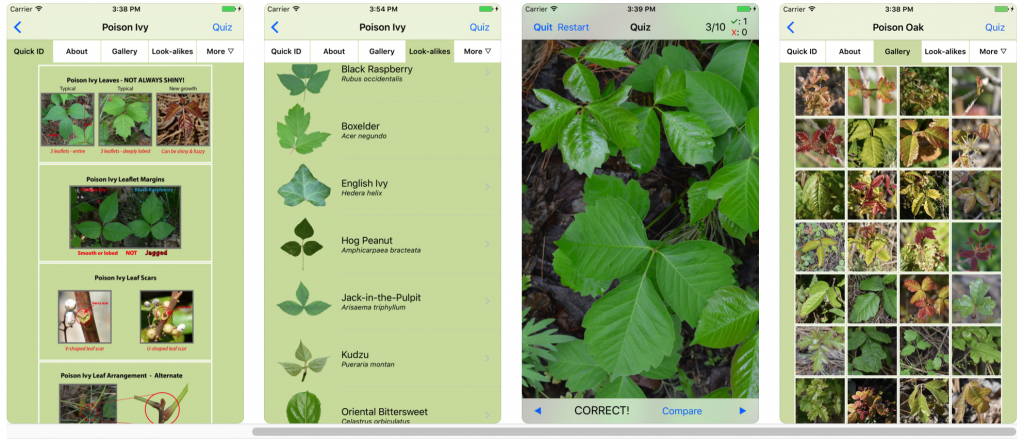
The app fits the “ounce of prevention” category to help you avoid a nasty encounter with common poisonous plants.
Rash Plants is a reference for everything you need to know about poison ivy, poison oak and poison sumac. Its 600 high resolution photographs will help you learn to identify these dangerous plants throughout the seasons – and avoid them! Included is a section on remedies if you stumble into these plants after the fact.
An outdoor enthusiast said in a review, “I’m an avid hiker, backpacker, gardener, and general outdoorsy person. I react to poison ivy and this app helps me identify the plants I need to stay away from and how to treat myself if I do get it! Great app!”
-
Critter Trax
CritterTrax is an iPhone/iPod Touch application for use as a wild game tracking/identification application. It provides reference photos of wild game tracks, animals, audio of its cries or calls, and even scat for turkey, deer, coyotes, bobcats, and more. You will be able to identify animals while camping, hiking, hunting, or sitting at home looking out into the canyon. It even includes Bigfoot!
-
Bee Smart Pollinator Gardener
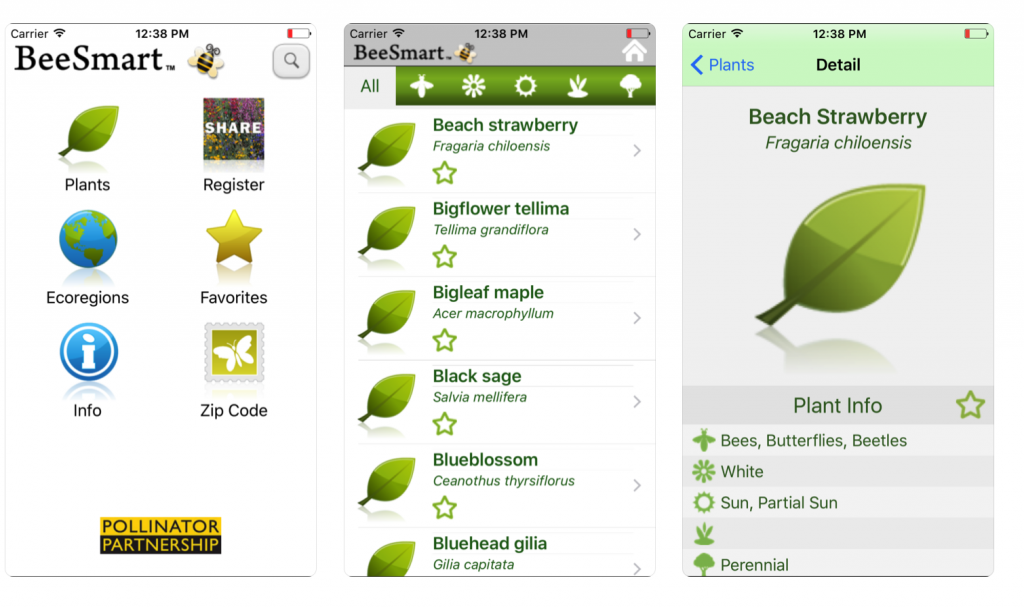
The BeeSmart Pollinator Gardener app will help you provide habitat for bees, butterflies, hummingbirds and more in your garden.
This app is an Eco-Warrior’s dream. The BeeSmart™ Pollinator Gardener helps you select plants for your garden to attract and feed pollinators specific to your region. The BeeSmart™ Pollinator Gardener’s user interface lets you browse through a database of nearly 1,000 native plants. Filter your plants by what pollinators you want to attract, light and soil requirements, bloom color, and plant type.
This is an excellent plant reference to attract bees, butterflies, hummingbirds, beetles, bats, and other pollinators to the garden, farm, school and every landscape. Once you’ve created your customized plant list, take it to your favorite nursery or garden center – never forget what to buy or plant again.
BeeSmart™ Pollinator Gardener app was developed by the nonprofit Pollinator Partnership. It is the largest organization in the world dedicated exclusively to the protection and promotion of pollinators and their ecosystems.
The National Audubon Society was established in 1905 and has a long history of educating Americans about nature, especially birds. Its field guides are the gold standard. Now the Audubon Bird Guide is in a free app, a complete field guide to over 800 species of North American birds, right in your pocket. It will help you identify the birds around you, keep track of the birds you’ve seen, and get outside to find new birds near you. It works for any experience level and has two million downloads.
Use the app to identify a bird you’ve seen by entering anything you can observe such as color, size, wing or tail shape. The “Bird ID” feature will give you a list of possible matches for your area. You can keep track of birds you see with the Sightings feature. You can post your bird photos to the Photo Feed so other Audubon Bird Guide users can see your best bird shots.
This is one of the App Store’s top apps for several years running and has six million users. Solar Walk is a 3D model of our solar system letting you interact with planets, satellites, moons, comets and other space objects anytime and anywhere. You can see all objects in the sky in real time, make virtual flights from one object to another, and even travel back in time to see what the universe and the sky looked like at any time in history. You can also check the phases of the moon, tides, and constellations.
Remember the old Rand McNally atlas? This app puts an eye popping atlas right in your hand. This interactive 3D globe features political and physical maps, worldwide weather, and information about major landmarks. Discover a lot of fascinating facts and useful information about Mother Earth.
iNaturalist is a joint initiative by the California Academy of Sciences and the National Geographic Society. One of the world’s most popular nature apps, iNaturalist helps you identify the plants and animals around you by connecting you with a community of more than 400,000 scientists and naturalists worldwide. By recording and sharing your observations, you also help crowdsource research quality data for scientists working to better understand and protect nature. For more info, check out http://www.inaturalist.org
AllTrails is an online database created in partnership with National Geographic. It contains over 75,000 different trails in the United States. It’s useful for all sorts of outdoor activities including hiking, running, biking, backpacking, and even armchair exploring. You can discover new trails new you or in a vacation destination. You can log your activities with its GPS activity tracker. Looking for a good spot for camping or backpacking? The AllTrails community can help make suggestions. The app will tell you whether a trail is kid or dog friendly, or accessible to horseback riding. You can also download offline map to start your outdoor adventure.


